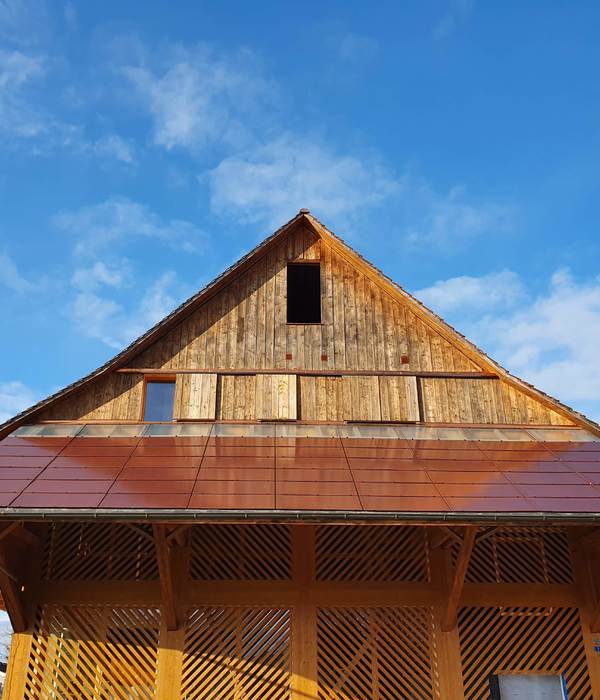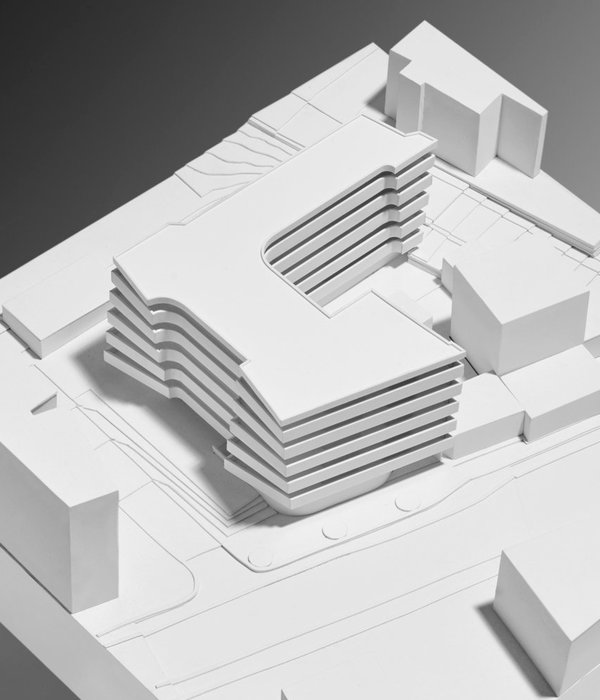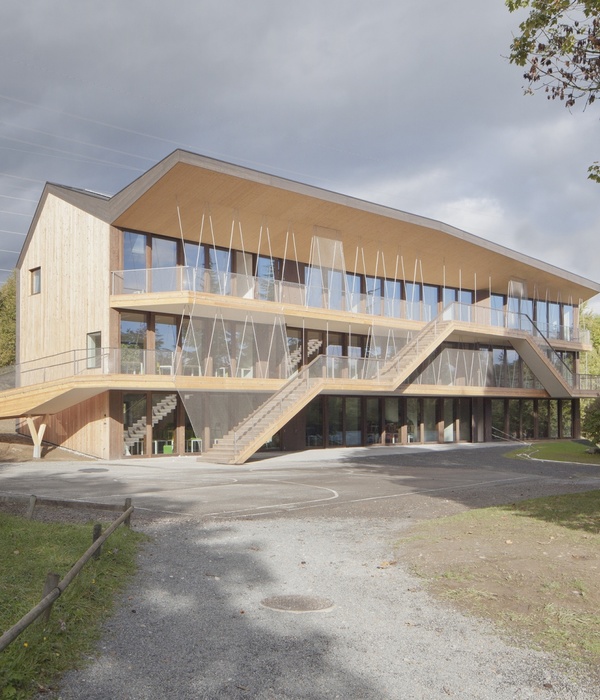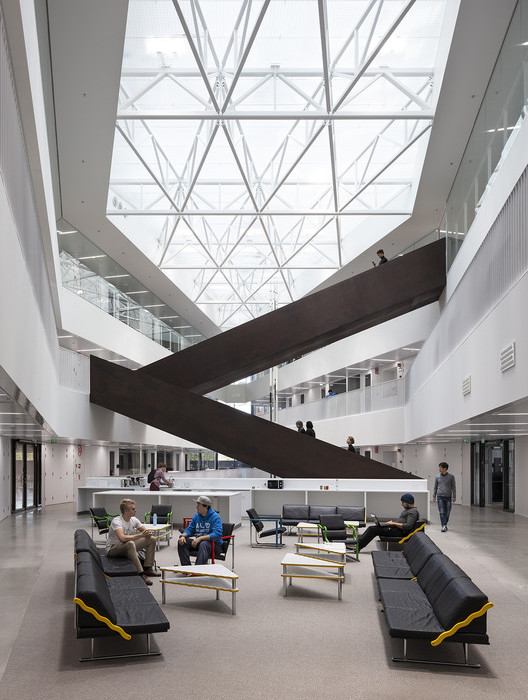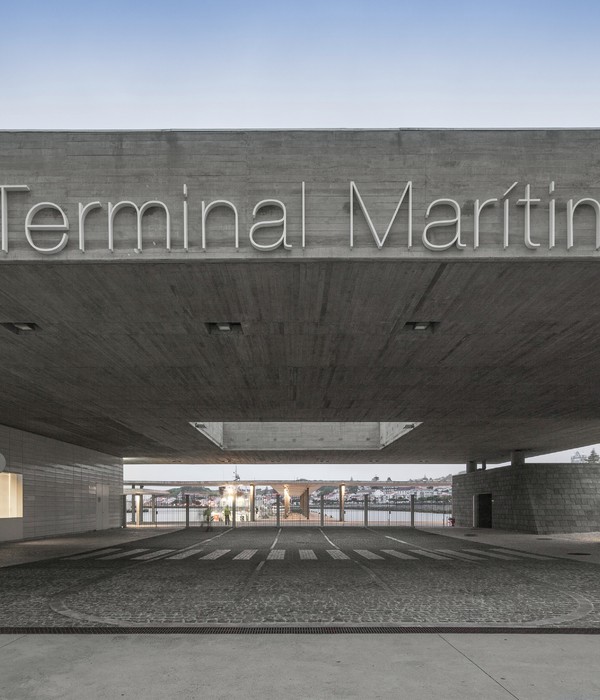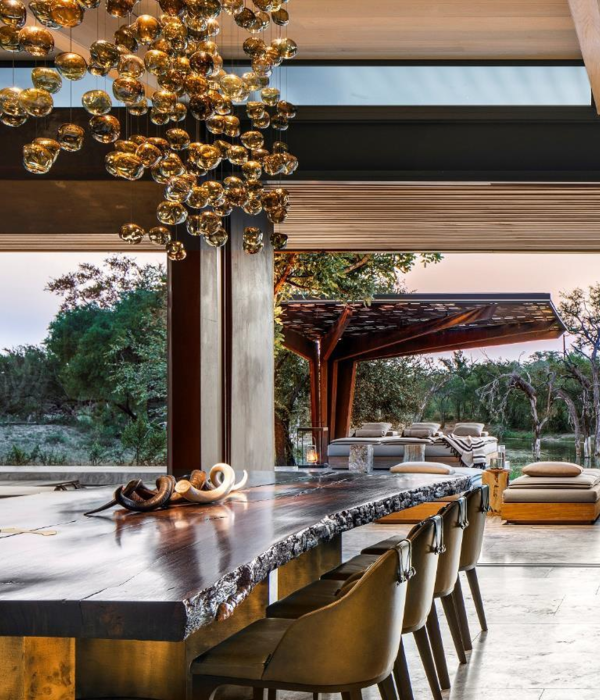© Mark Herboth
c.马克·赫尔本
架构师提供的文本描述。樱桃医院面临的挑战是设计一个行为卫生设施,在既安全又治疗的空间内为精神病患者提供尊严。它位于北卡罗莱纳州东部的农村沿海平原的中心地带。医院的治疗重点放在心理健康治疗上,使患者能够识别和处理日常生活中的日常事务-对这些患者来说,模仿日常活动,比如上班上下班或参观公园等,可能是一个重大挑战。Cherry医院的设计解决了这一问题,通过使用材料、比例、日光和空间条件的调整,强调了编程组件之间的转换。
Text description provided by the architects. Cherry Hospital addresses the challenge of designing a behavioral health facility that provides psychiatric patients with dignity in a space that is both safe and therapeutic. It is set in the heart of the rural coastal plains of Eastern North Carolina. Treatment at the hospital focuses on mental health therapy that enables patients to recognize and cope with the routine of daily life—for these patients, mimicking common daily activities like commuting to work or visiting a park can be a significant challenge. The design of Cherry Hospital addresses this by accentuating transitions between programmatic components through the use of material, scale, daylight, and modulation of spatial conditions.
聚集了403,000 SF行为健康医院,借鉴当地的先例,组织了重复计划,并打破了结构的规模。此外,这种方法产生了一种正式的构图,类似于整个区域的日常图标和纹理-该地区农耕农村的节奏、烟草谷仓作为景观内物体的图像,以及田野中的沟尺-所有这些都与该项目的常规和重复要素平行。
Massing of the 403,000SF behavioral health hospital draws from vernacular precedents to organize the repetitive program and break down the scale of the structure. Additionally, this approach yields a formal composition akin to daily icons and textures seen throughout the region – the cadence of the region’s agrarian countryside, images of tobacco barns as objects within a landscape, and the meter of furrows in the field all parallel the regular and repetitive elements of the project.
© Mark Herboth
c.马克·赫尔本
Uses Diagrams
使用图表
© Mark Herboth
c.马克·赫尔本
建筑项目的正式战略遵循了一个小镇“主要街道”的叙事,以此作为一种手段,使医院进一步扎根于当地居民的文化中。病人室与居民区、民用建筑的治疗区、主街沿线商店的娱乐项目以及城市和社区公园的庭院有关。多样的庭院设计为重复的建筑提供了一个对立面,并被编织到建筑织物中。景观通过在大建筑中提供独特的位置感来帮助寻找方法。通过提供支持家庭、工作和社区观念的环境,这些策略共同帮助患者回到日常生活的日常生活中。
The formal strategy of the building program follows the narrative of a small-town “main street” as a means to further root the hospital in the culture of its inhabitants. Patient rooms are related to residential neighborhoods, treatment areas to civic buildings, recreational program to shops along Main Street, and courtyards to city and neighborhood parks. Varied courtyard designs provide a counterpoint to the repetitive architecture and are woven into the building fabric. The landscapes aid way-finding by providing a unique sense of place within the large building. Together, these strategies aid in transitioning patients back into a routine of daily life by providing environments that support notions of home, work, and community.
© Mark Herboth
c.马克·赫尔本
Courtyards Plans
庭院图
© Mark Herboth
c.马克·赫尔本
Architects Perkins+Will
Location North Carolina, United States
Category Hospital
Area 403000.0 ft2
Project Year 2016
Photographs Mark Herboth
Manufacturers Loading...
{{item.text_origin}}


